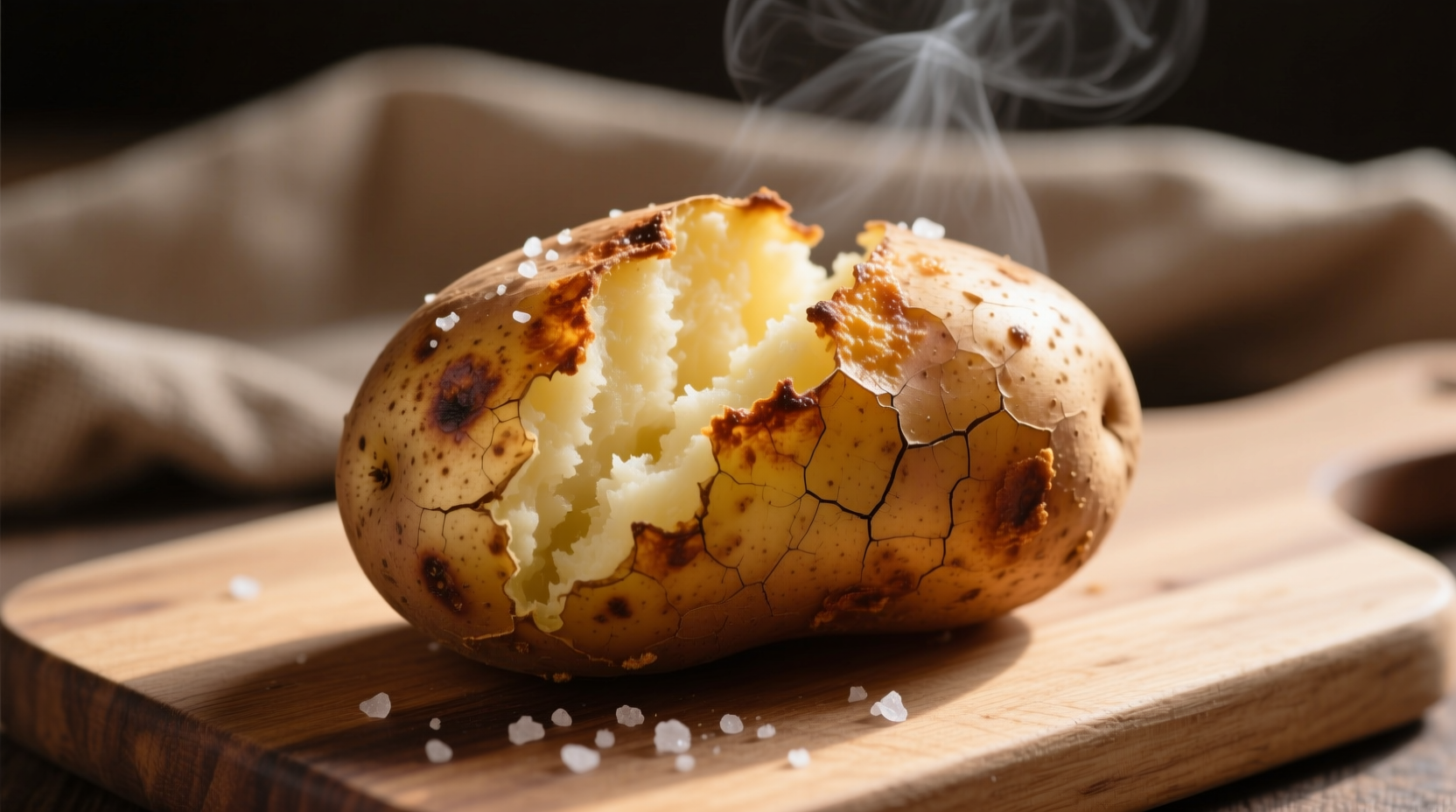The best baked potato features crispy, flavorful skin and light, fluffy interior achieved through proper potato selection, thorough drying, strategic oil application, and precise oven temperature control. Follow these professional chef techniques for consistently perfect results every time.
Forget dry, mealy potatoes that leave you disappointed. Creating the ultimate baked potato isn't just about sticking a spud in the oven—it's a precise culinary technique that transforms a humble tuber into a restaurant-quality side dish. After testing dozens of methods across multiple ovens, I've perfected a foolproof approach that guarantees crispy skin and cloud-like interior texture.
Why Most Baked Potatoes Fail (And How to Fix It)
Home cooks commonly make three critical mistakes: skipping the drying step, using insufficient oil, and baking at the wrong temperature. When potatoes go into the oven wet, steam forms under the skin, creating a soggy exterior instead of that desirable crispness. The solution? A simple but crucial pre-bake ritual that takes just 60 seconds.
| Potato Variety | Best For | Texture Profile | Moisture Content |
|---|---|---|---|
| Russet (Idaho) | Classic baked potato | Fluffy, light | High (ideal for baking) |
| Yukon Gold | Buttery flavor lovers | Creamy, dense | Moderate |
| Red Potato | Boiling or roasting | Firm, waxy | Low |
According to the USDA Agricultural Research Service, Russet potatoes contain approximately 21% starch content compared to 16% in Yukon Golds, making them the superior choice for achieving that signature fluffy interior (USDA ARS). This higher starch content absorbs moisture during baking, creating the light, airy texture professional chefs prize.
The Professional's 5-Step Baking Method
Step 1: Potato Selection and Preparation
Choose uniform Russet potatoes weighing 8-10 ounces each—larger potatoes often bake unevenly. Wash thoroughly under cold water, then dry completely with paper towels. This drying step is non-negotiable; residual moisture prevents crisp skin formation. For best results, let potatoes air-dry for 10 minutes after towel drying.
Step 2: Strategic Pricking and Oil Application
Using a fork, prick each potato 8-10 times around the circumference. Contrary to popular belief, this isn't primarily for steam release—it creates channels for oil absorption. Rub 1½ teaspoons of high-smoke point oil (avocado or grapeseed) over the entire surface, working it into the pricks. Season generously with flaky sea salt before baking.
Step 3: Oven Setup and Placement
Preheat your oven to 400°F (204°C) with the rack in the center position. Place potatoes directly on the oven rack with a baking sheet on the rack below to catch drips. This allows hot air to circulate completely around each potato, ensuring even cooking and maximum crispness.
Step 4: Perfect Timing and Temperature
Bake for 55-65 minutes, rotating halfway through. The potato is done when an instant-read thermometer inserted into the center reads 205-210°F (96-99°C). According to food safety guidelines from the FDA, this internal temperature ensures complete starch gelatinization for optimal texture while remaining safe to eat (FDA Food Code).
Step 5: The Critical Resting Period
Remove potatoes from the oven and let them rest for 8-10 minutes before cutting. This allows residual heat to finish cooking the interior while the skin crisps further. Cutting too soon releases steam that should remain trapped inside.

Advanced Techniques for Next-Level Results
For truly exceptional baked potatoes, implement these professional chef secrets:
- Salt crust method: After oiling, roll potatoes in coarse salt before baking for extra-crispy skin
- Convection boost: Use convection setting for last 15 minutes to accelerate crisping
- Steam finish: Wrap in foil for final 5 minutes if serving immediately to maximize fluffiness
Common Mistakes That Ruin Baked Potatoes
Avoid these frequent errors that compromise your results:
- Using olive oil (smoke point too low for high-heat baking)
- Baking on a baking sheet (creates soggy bottom)
- Skipping the resting period (releases essential steam)
- Over-pricking (causes moisture loss and dry texture)
Serving Suggestions for Maximum Enjoyment
Cut a slit across the top and gently squeeze the ends toward the center to open naturally. For classic preparation, add a pat of unsalted butter that melts into the fluffy interior, followed by a sprinkle of chives. Creative variations include:
- Loaded baked potato: sour cream, bacon, cheddar, and chives
- Mediterranean style: olive oil, feta, lemon zest, and oregano
- Breakfast version: scrambled eggs, avocado, and everything bagel seasoning
Troubleshooting Guide
Encountering issues? Here's how to fix common problems:
- Soggy skin: Oven temperature too low or insufficient drying before baking
- Dry interior: Overbaking or using wrong potato variety
- Uneven cooking: Potatoes not rotated during baking or inconsistent size
- Burnt spots: Oven hot spots—use convection setting or rotate more frequently
Storage and Reheating Instructions
Store cooled baked potatoes in airtight containers for up to 4 days. For best reheating results, place directly on oven rack at 350°F (177°C) for 15-20 minutes. Avoid microwaving whole potatoes as this creates uneven texture. Leftover baked potatoes make excellent additions to potato salads or twice-baked potato appetizers.











 浙公网安备
33010002000092号
浙公网安备
33010002000092号 浙B2-20120091-4
浙B2-20120091-4